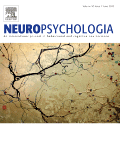
Neuropsychologia
Scope & Guideline
Connecting Dots Between Mind and Brain for Over 60 Years
Introduction
Aims and Scopes
- Neural Mechanisms of Cognition:
The journal emphasizes studies that investigate the neural correlates of cognitive processes such as memory, attention, language, and perception, often utilizing techniques like fMRI, EEG, and TMS. - Clinical Neuropsychology:
Research addressing cognitive impairments resulting from neurological disorders, including Alzheimer's disease, Parkinson's disease, and traumatic brain injury, is a core focus, contributing to the understanding of neuropsychological rehabilitation. - Cognitive Neuroscience Methodologies:
Neuropsychologia showcases innovative methodologies in cognitive neuroscience, combining behavioral experiments with neuroimaging and electrophysiological measures to elucidate the brain-behavior relationship. - Developmental and Lifespan Perspectives:
The journal includes studies on cognitive development across the lifespan, examining how aging, developmental disorders, and early life experiences shape cognitive functions and neural processing. - Interdisciplinary Approaches:
Neuropsychologia promotes interdisciplinary research, drawing connections between neuroscience, psychology, linguistics, and education, facilitating a holistic understanding of cognitive processes.
Trending and Emerging
- Neuroplasticity and Rehabilitation:
There is a growing body of research focused on neuroplasticity and its implications for cognitive rehabilitation, particularly in clinical populations, highlighting the brain's capacity to adapt following injury or dysfunction. - Emotion and Cognition Interactions:
Studies examining how emotional states influence cognitive processes, such as memory retrieval and decision-making, are gaining traction, underscoring the importance of affective neuroscience. - Social Neuroscience:
Research exploring the neural basis of social cognition, including empathy, theory of mind, and social decision-making, is increasingly prevalent, reflecting a broader interest in understanding interpersonal dynamics. - Multimodal and Ecological Approaches:
The trend towards integrating various methodologies, such as combining neuroimaging with behavioral tasks in naturalistic settings, is on the rise, emphasizing the need for more ecologically valid research. - Bilingualism and Cognitive Control:
Emerging studies are investigating the cognitive benefits of bilingualism, particularly in relation to executive functions and neural efficiency, contributing to the understanding of language processing in diverse contexts.
Declining or Waning
- Traditional Neuropsychological Assessments:
Research centered on conventional neuropsychological tests appears to be waning, as the field increasingly embraces more dynamic and ecologically valid approaches to assessing cognitive functions. - Static Brain Mapping Studies:
There is a noticeable reduction in studies relying solely on static lesion mapping methods, as more emphasis is placed on functional connectivity and dynamic network analyses within cognitive neuroscience. - Single-Domain Language Studies:
Research focusing exclusively on language processing in isolation is becoming less common, with a shift towards exploring language in the context of broader cognitive functions and multimodal processing. - Reductionist Models of Cognition:
The simplistic, reductionist models that fail to account for the complexity of cognitive processes are being replaced by integrative models that consider the interactions between various cognitive domains and neural systems.
Similar Journals
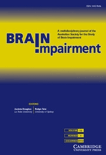
Brain Impairment
Illuminating pathways in behavioral neuroscience.Brain Impairment, published by Cambridge University Press, is a pivotal academic journal dedicated to advancing the understanding of neurological conditions and cognitive processes. With its ISSN 1443-9646 and E-ISSN 1839-5252, this esteemed journal has been at the forefront of research in the fields of Behavioral Neuroscience, Cognitive Neuroscience, and Neuropsychology since its inception in 2004. Covering a broad scope, it addresses critical insights into brain function, impairments, and therapies, making it a valuable resource for researchers, clinicians, and students alike. Brain Impairment holds various rankings, including Q4 in Behavioral Neuroscience and Q2 in Speech and Hearing, reflecting its significance in the academic community. While the journal operates under print access, its rich content serves as an essential reference for professional development and scholarly discussion in the UK and beyond. Researchers and practitioners can rely on this journal to provide cutting-edge research and reviews that inform clinical practice and shape future studies in neurology and cognitive neuroscience.
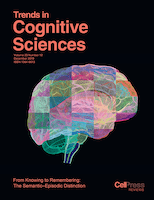
TRENDS IN COGNITIVE SCIENCES
Connecting Minds: Where Research Meets InsightTRENDS IN COGNITIVE SCIENCES, published by CELL PRESS, stands as a premier platform for the dissemination of high-quality research in cognitive neuroscience, experimental psychology, and neuropsychology. With an impressive impact factor and consistently placed in the Q1 category across multiple dimensions of cognitive research, this journal not only ranks in the top tier of its fields—holding the 1st position in both Cognitive Neuroscience and Neuropsychology but also boasts an exceptional percentile ranking of 99. As it converges from 1997 to 2024, it reflects the evolving landscape of cognitive sciences, making it a vital resource for researchers, professionals, and students seeking to stay updated on influential trends and groundbreaking studies. Though not an open-access journal, TRENDS IN COGNITIVE SCIENCES offers readers access to a wealth of information that shapes our understanding of complex cognitive processes and behaviors.

BRAIN TOPOGRAPHY
Charting New Territories in Cerebral ImagingBRAIN TOPOGRAPHY is an esteemed academic journal dedicated to the exploration of topographical mapping of brain activities, cementing its reputation as a cornerstone in the fields of anatomy, neurology, and radiology. Published by SPRINGER, this journal has been a vital resource since its inception in 1988, with a steadily increasing impact reflected in its 2023 rankings, including Q1 categories in Anatomy and Radiology. With its significant contributions to understanding cerebral structure and function through advanced imaging technology, BRAIN TOPOGRAPHY is essential for researchers, professionals, and students seeking to stay at the forefront of neuroscientific advancements. The journal benefits from its strong academic stature, positioned within the 60th to 71st percentiles across several Scopus ranks, further enhancing its visibility in an evolving research landscape. Although not an open-access journal, its rigorous peer-review process ensures the dissemination of high-quality research that significantly contributes to the scientific community. Set against the backdrop of a global landscape, this journal continues to shape discussions on cerebral topography, offering a platform for innovative studies and critical insights.
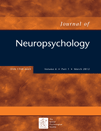
Journal of Neuropsychology
Pioneering Research in Neuropsychological ScienceThe Journal of Neuropsychology, published by WILEY, is a premier academic journal dedicated to advancing the field of neuropsychology and its related disciplines. With a focus on behavioral and cognitive neuroscience, this journal presents cutting-edge research that informs our understanding of psychological functions and their underlying neural mechanisms. Operating with an impressive impact factor representative of its rigorous peer-review process, the journal has established itself within the Q2 and Q3 quartiles of multiple relevant categories, including Neuropsychology and Physiological Psychology. Researchers will find the ISSN 1748-6645 and E-ISSN 1748-6653 useful for academic referencing as they explore articles that span innovative methodologies and insights into neurological conditions. Published continuously since 2007, the Journal of Neuropsychology stands as a vital resource for professionals and students alike, fostering scholarly discourse and knowledge exchange in neuropsychological research.

EXPERIMENTAL BRAIN RESEARCH
Pioneering Research for a Deeper Insight into NeurologyEXPERIMENTAL BRAIN RESEARCH is a renowned journal published by SPRINGER, dedicated to advancing understanding in the field of neuroscience. With a history dating back to 1966, this journal offers valuable insights into the mechanisms of brain function and neurological disorders, making it a vital resource for researchers, professionals, and students alike. While it currently holds a Q3 classification in the field of Neuroscience (miscellaneous) and ranks #73 out of 113 in Scopus's General Neuroscience category, it continually contributes to fostering innovative research and collaborative dialogue. The journal is not open access, ensuring that although content is subscription-based, it maintains a high standard of peer review and scholarly rigor. By covering a breadth of topics relevant to both experimental and theoretical aspects of brain research, EXPERIMENTAL BRAIN RESEARCH serves as an essential platform for disseminating cutting-edge discoveries and theories in the dynamic realm of neuroscience.

BRAIN AND LANGUAGE
Illuminating the Interplay Between Language and Brain FunctionBRAIN AND LANGUAGE is a premier journal published by Academic Press Inc Elsevier Science, dedicated to fostering scholarly communication in the fields of Cognitive Neuroscience, Linguistics, Psychology, and Speech and Hearing. With its ISSN 0093-934X (Print) and 1090-2155 (Online), the journal has established a significant presence since its inception in 1974, continuing to provide valuable insights into the intricate relationship between brain function and language processing. This journal is highly regarded, boasting a 2023 ranking of Q1 in Linguistics and Language, reflecting its influential contributions to the field, alongside Q2 rankings in categories such as Cognitive Neuroscience and Experimental Psychology. With a rigorous peer-review process, it serves as an essential resource for researchers and professionals seeking to deepen their understanding of language mechanisms and their cognitive underpinnings. Despite not being an Open Access journal, BRAIN AND LANGUAGE ensures that its articles are widely accessible and of high quality, making it an indispensable platform for both emerging and established scholars aiming to expand the boundaries of research in language and cognition.
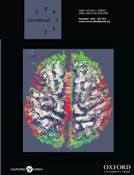
CEREBRAL CORTEX
Shaping the future of neuroscience discovery.CEREBRAL CORTEX, published by Oxford University Press Inc, is a premier journal dedicated to advancing the field of neuroscience, specifically focusing on the cellular, molecular, and cognitive aspects of cortical structure and function. With an impressive impact factor that situates it in the top quartile (Q1) of its categories for 2023, this journal holds significant relevance for researchers and professionals interested in the latest discoveries and methodologies in both Cognitive Neuroscience (ranked #31 out of 115) and Cellular and Molecular Neuroscience (ranked #48 out of 97). Operating without an open access model, it ensures rigorous peer review and dissemination of high-quality research from across the globe. Since its inception in 1991, CEREBRAL CORTEX has established itself as a critical platform for educators and inventors, pushing the boundaries of knowledge in understanding brain function and its implications for behavior. Researchers and students alike will find this journal an invaluable resource for both foundational and cutting-edge studies in neuroscience.
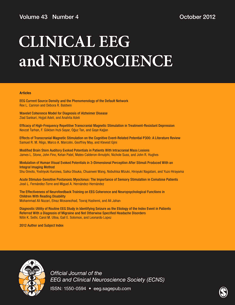
CLINICAL EEG AND NEUROSCIENCE
Illuminating the Pathways of Brain FunctionCLINICAL EEG AND NEUROSCIENCE, published by SAGE Publications Inc, stands as a pivotal journal in the fields of neurology and neuroscience, with a focus on the latest research and advancements in clinical electroencephalography and neurophysiology. Since its inception in 1970, the journal has provided a platform for rigorous scholarly work, offering valuable insights into neurological disorders and EEG technology. With its current categorization in the Q2 and Q3 quartiles across various subfields of medicine and neurology, it ranks prominently in the Scopus database, emphasizing its significance in academic discourse. The journal's commitment to disseminating high-quality research is underscored by its open access options, facilitating broader accessibility to its published findings. For researchers, clinicians, and students alike, CLINICAL EEG AND NEUROSCIENCE remains an essential resource for keeping abreast of the evolving landscape of neurological studies.
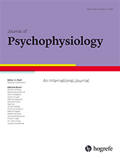
JOURNAL OF PSYCHOPHYSIOLOGY
Illuminating the Links Between Mind and BodyJOURNAL OF PSYCHOPHYSIOLOGY, published by Hogrefe Publishing Corp, serves as a crucial platform for the dissemination of research in the interdisciplinary fields of neuropsychology, physiological psychology, and neuroscience. With an ISSN of 0269-8803 and an E-ISSN of 2151-2124, this journal has been a staple in the academic community since its inception in 1987 and will continue to publish impactful research until at least 2024. Despite the absence of Open Access, the journal maintains a significant presence, holding Q3 and Q4 quartile rankings in relevant disciplines according to the 2023 metrics. Researchers and practitioners benefit from the journal's robust focus on integrating psychophysiological research with practical applications, contributing to a better understanding of psychological processes through physiological insights. As evident from its Scopus rankings, the JOURNAL OF PSYCHOPHYSIOLOGY is dedicated to fostering scholarly dialogue and advancing knowledge in the field, making it an essential resource for anyone invested in the intricacies of human behavior and the physiological underpinnings thereof.

Behavioral and Brain Functions
Unraveling the Connections Between Brain and BehaviorBehavioral and Brain Functions is a leading Open Access journal published by BMC, dedicated to advancing the field of behavioral neuroscience, cognitive neuroscience, and biological psychiatry since its inception in 2005. This esteemed journal, based in the United Kingdom, has established itself as a vital resource for researchers and professionals, boasting a remarkable influence demonstrated by its Q1 and Q2 rankings across multiple relevant categories. With its commitment to providing unrestricted access to high-quality research, the journal facilitates the dissemination of significant findings in understanding the complex interactions between behavior and brain function. The journal ranks impressively within the Scopus database, positioning itself among the top-tier publications in its categories, making it an essential platform for academic discourse and innovation. As it converges through 2024, Behavioral and Brain Functions continues to play a crucial role in shaping the forefront of neuroscientific inquiry, inviting contributions that challenge our understanding and promote further exploration in these dynamic fields.